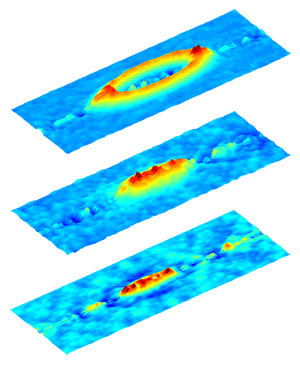HMC Physics Colloquium
Tuesdays at 16:30 in Shanahan Center for Teaching and Learning, Room B460
Ben Olsen
Rice University
Jan. 27, 2015
Atomic gases cooled to nanokelvin temperatures can be used to study the physics governing exotic many-body quantum systems, some of which are too complicated for computer simulation. Several many-body systems, including superconductors and neutron stars, exhibit frictionless flow, or superfluidity. We experimentally probe the fermion pairing that leads to superfluidity using laser-trapped clouds of ultracold lithium atoms in two spin states. By measuring how different phases in the gas separate, we probe how superfluidity is enhanced or suppressed by imbalanced spin populations and interactions between the two spin species. To explore how dimensionality influences superfluidity, we load the atoms into an array of 1D tubes formed by an optical lattice and vary the tunneling between the tubes by changing the lattice depth. This knowledge will guide experimental searches for a many-body phase with both superfluid and magnetic order (the FFLO phase), predicted 50 years ago, but so far not directly observed.



